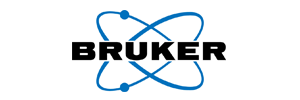Need for Speed: Testing Edible Oils & Fats with FT‑NIR Spectroscopy
- Like
- Digg
- Del
- Tumblr
- VKontakte
- Buffer
- Love This
- Odnoklassniki
- Meneame
- Blogger
- Amazon
- Yahoo Mail
- Gmail
- AOL
- Newsvine
- HackerNews
- Evernote
- MySpace
- Mail.ru
- Viadeo
- Line
- Comments
- Yummly
- SMS
- Viber
- Telegram
- Subscribe
- Skype
- Facebook Messenger
- Kakao
- LiveJournal
- Yammer
- Edgar
- Fintel
- Mix
- Instapaper
- Copy Link
Oils and fats are considered essential nutrients for our daily diet and contribute significantly to the regulation of various body functions. Various parameters are used to evaluate the quality of edible fats and oils, including the fatty acid composition, iodine value, free fatty acids (FFA), trans fatty acids (TFA), anisidine value (AnV) and many other parameters.
Traditional analyses are usually performed using standardized chemical and physical methods, which are often time-consuming and involve high operating costs, such as chromatographic techniques. These often require hazardous solvents and reagents that can pose health risks and increase disposal costs.
Near Infrared Spectroscopy (NIR) on the other hand is fast, cost-effective and safe to use, even for untrained personnel, as no sample preparation is required. It has been a well-established technique in the agricultural sector for decades and is today an important element of quality control in the food industry.
Related topics
Food Fraud, Food Safety, Health & Nutrition, Lab techniques, Quality analysis & quality control (QA/QC)









